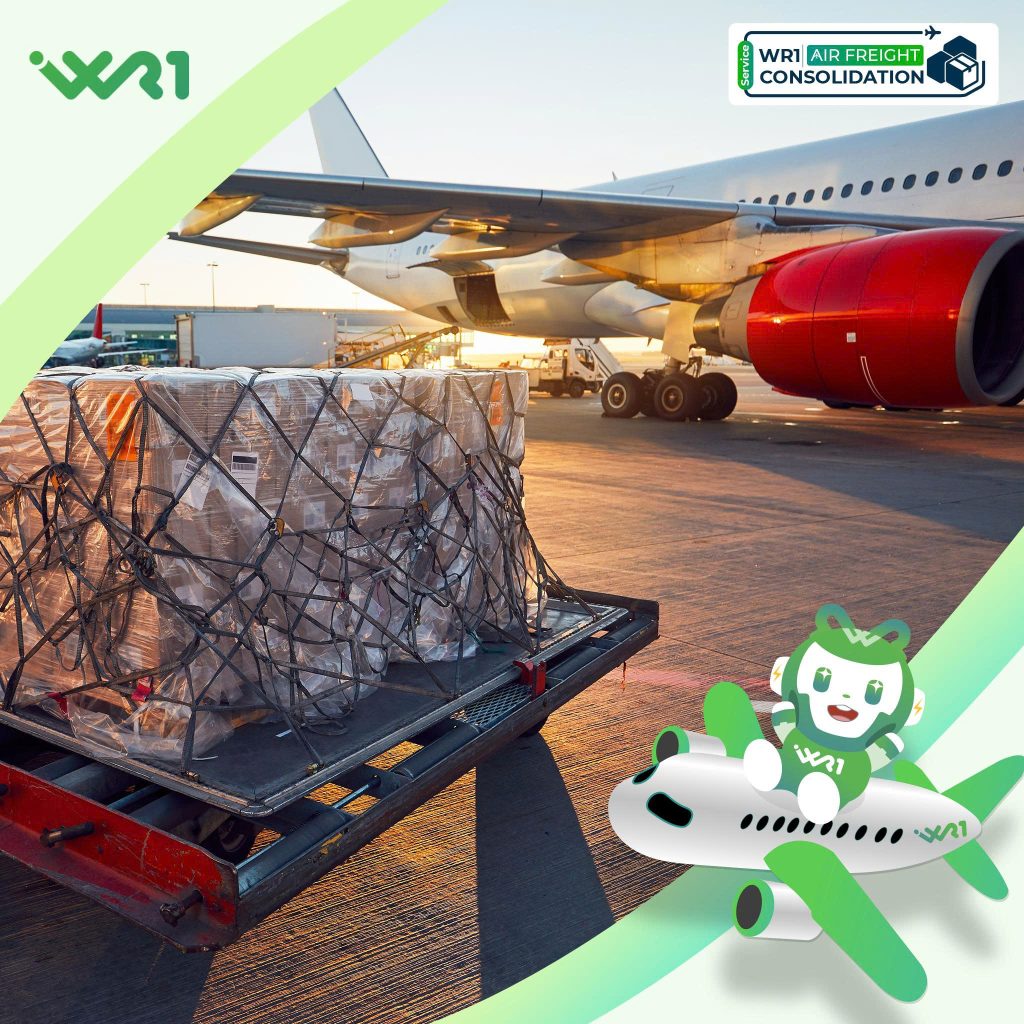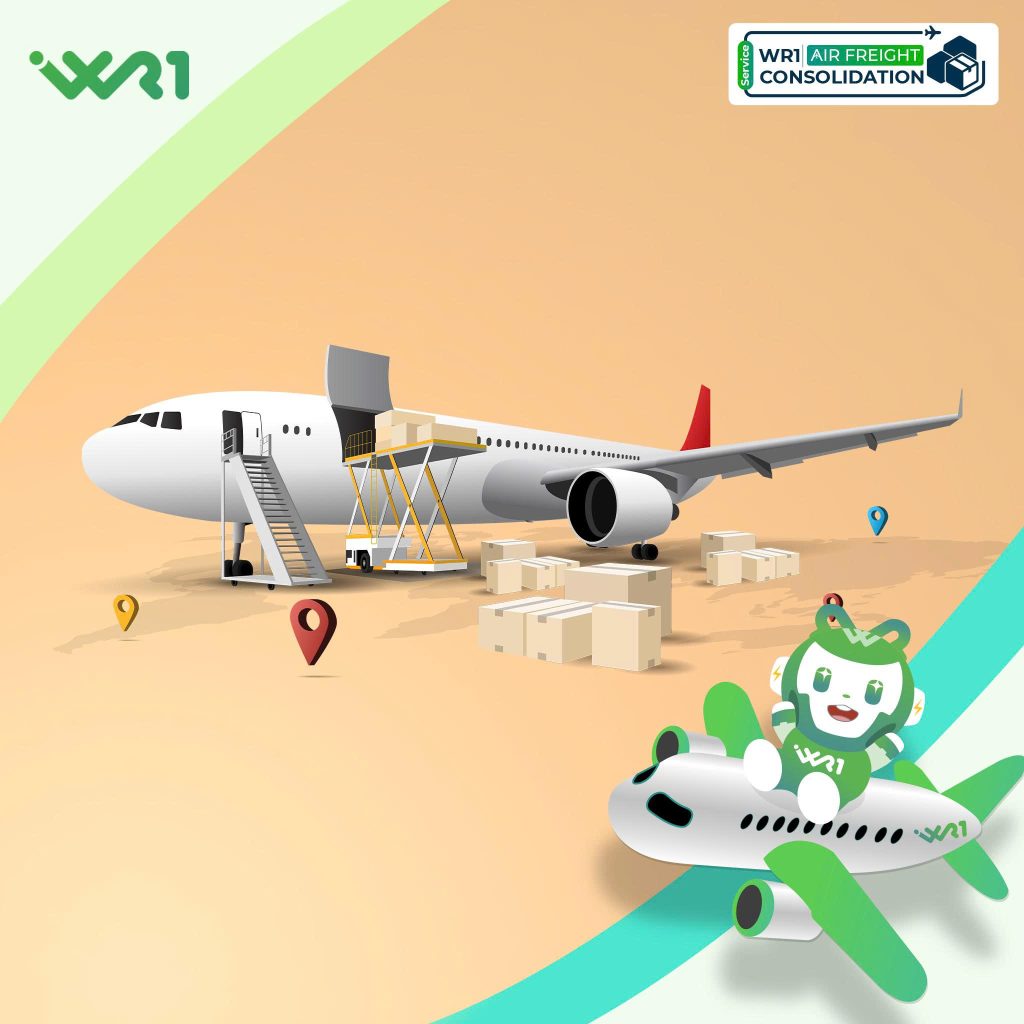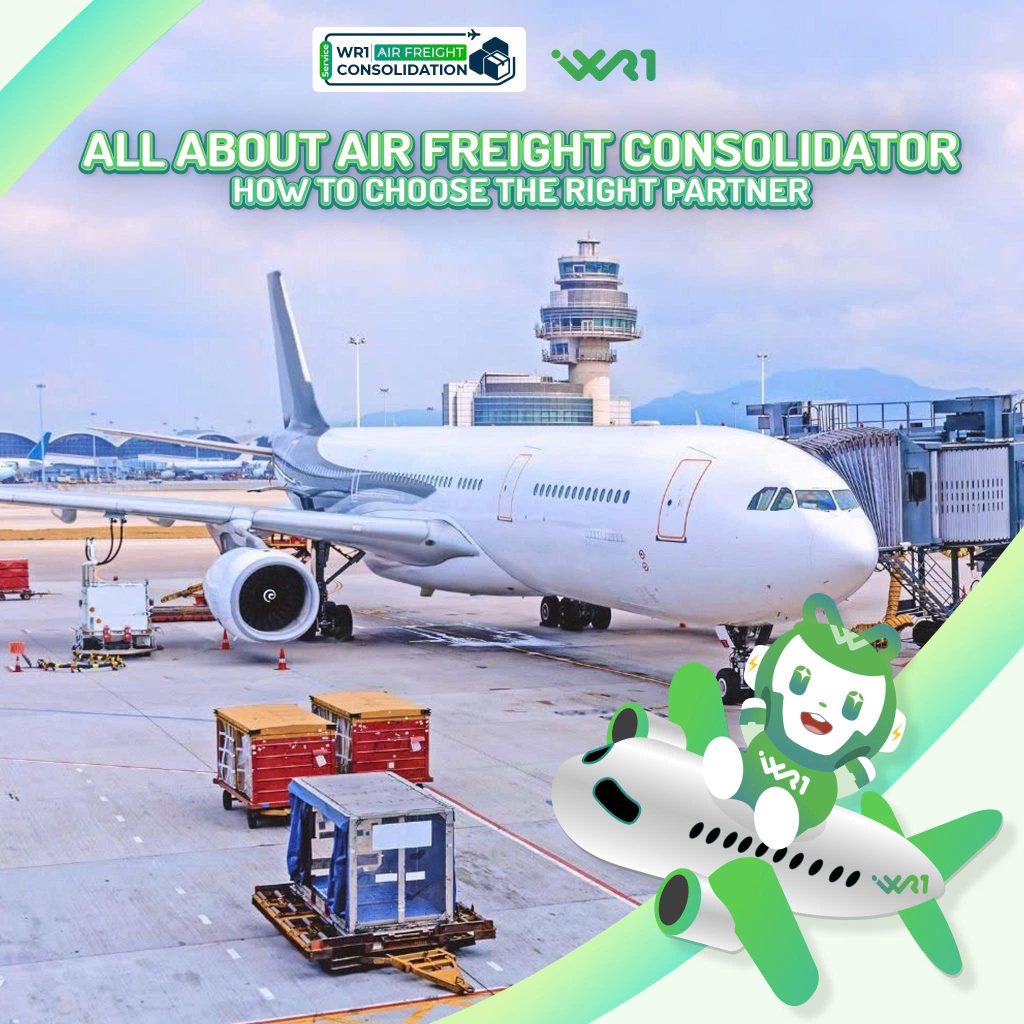In the world of global logistics, optimizing both cost and transit speed is a top priority for businesses. Air Freight Consolidation (Air console)—the process of combining multiple smaller shipments into one for air transport—has become increasingly popular. This method allows companies to take advantage of the speed of air freight while keeping expenses at a reasonable level. It is especially valuable for businesses that need fast delivery but want to avoid the high cost of booking an entire air shipment for themselves.
Air Freight consolidation meaning
What is Freight consolidation?
Freight consolidation (also known as cargo consolidation or consolidation service) is a logistics strategy where shipments from multiple customers are combined into a single larger load for joint transportation. This approach is widely applied across different modes of transport—air, sea, road, rail—or even multimodal solutions.
The consolidation process usually takes place at a central warehouse or hub, where cargo is received, stored, sorted, packaged, and arranged before departure. By pooling shipments together, businesses make more efficient use of transportation space, reduce costs, and simplify operational workflows.
What is Air Freight consolidation?

In air transportation, Air Freight Consolidation refers to grouping multiple small shipments from different shippers onto the same flight. It is considered the most cost-effective option among air freight services, especially for businesses that cannot afford to wait weeks for lower-cost ocean freight.
By sharing cargo space and expenses, companies gain access to the speed of air transport while optimizing logistics budgets. Consolidated air cargo can be shipped using:
- Cargo aircraft (freighters): Suitable for larger volumes and a wide variety of goods.
- Passenger aircraft: Using the cargo hold beneath the cabin, which expands flight network options and provides greater scheduling flexibility.
However, businesses should note that oversized items or specialized equipment may face restrictions when transported on passenger planes due to cargo door size limitations.
Benefits of Air Freight Consolidation
Cost Saving
One of the most notable advantages of Air Freight Consolidation is its ability to significantly lower transportation costs. Instead of paying for an entire cargo hold on a dedicated shipment, businesses only pay for the space their goods actually occupy. Fuel, handling, and surcharge expenses are shared among multiple shippers, making the overall rate far more affordable.
In practice, companies can save 30%–50% compared to sending individual shipments by air. Additionally, when compared with LCL (Less than Container Load) shipping by sea, air freight offers clearer and more predictable end-to-end handling fees, which are usually fixed. By contrast, LCL ocean shipments often generate multiple additional port charges, such as unloading, inspection, or container storage surcharges. As a result, the actual total cost of LCL by sea can end up equal to—or even higher than—air freight consolidation.
Efficiency
Air Freight Consolidation enhances efficiency not only through speed but also in the way shipments are handled. Unlike sea freight, air cargo involves fewer loading and unloading steps, which reduces the risk of damage. The shorter transit time of air transport ensures goods arrive quickly and on schedule.
Freight forwarders specializing in air consolidation typically maintain stable flight networks and fixed schedules, making shipments easier to track and less vulnerable to delays. This high level of reliability is critical for maintaining seamless supply chains and ensuring strong customer satisfaction.
Flexibility

Compared with ocean freight, which is tied to rigid vessel schedules and often takes weeks for delivery, Air Freight Consolidation provides superior flexibility. Businesses can choose from a wide range of flights—whether on dedicated freighters or in the cargo hold of passenger aircraft. This flexibility allows companies to optimize delivery timelines, particularly for remote destinations or locations with limited ocean service.
For businesses that require short delivery windows, adaptable schedules, and reduced risks of disruption, air freight consolidation is an ideal solution. It strikes the right balance between speed, cost, and reliability, making it a powerful strategy for global supply chains.
Compare Air vs. Sea Freight Consolidation
In international logistics, both Sea Freight Consolidation and Air Freight Consolidation are cost-optimization strategies. However, the two methods differ significantly across multiple dimensions:
| Air Freight Consolidation | Sea Freight Consolidation | |
| Cost | More expensive, but transparent. | Much cheaper for large or heavy shipments. |
| Speed & Transit Time | Exceptionally fast—intercontinental delivery within hours; preparation usually takes 1–2 days. | Much slower—transit can take several weeks, with additional time needed for consolidation and port formalities. |
| Schedules & Frequency | Frequent flights with multiple options, thanks to the combination of cargo aircraft and passenger aircraft belly space. | Entirely dependent on vessel schedules, which is usually fixed on a weekly or monthly basis. |
| Size & Weight Capacity | Limited by ULD (Unit Load Device): e.g., LD-7 holds approx. 370 ft³ and carries up to ~13,300 lbs. | Advantageous for bulky or heavy cargo. A 40’ container holds ~2,390 ft³ and carries over 58,000 lbs. |
| Type of Cargo | Best suited for smaller, high-value items (e.g., electronics, luxury goods), perishable products (e.g., pharmaceuticals, flowers), certain hazardous materials (subject to air safety regulations), and just-in-time inventory that requires speed and reliability. | Ideal for larger, heavier, and less time-sensitive cargo such as machinery, raw materials, or bulk commodities. Generally not suitable for dangerous goods (DG cargo) due to stricter maritime regulations. |
| Safety & Risk | Fewer handling steps, shorter transit time, strict security checks—lower risk of damage or loss. | Multiple handling stages, exposure to risks such as rough seas, humidity, and long storage periods. |
Conclusion
Based on the insights shared in this article, WR1 is confident that you now have a clearer understanding of the concept of Air Freight Consolidation. Don’t forget to review the key benefits and the comparison between Air and Sea Freight Consolidation to make the best decision for your shipments.



 Tiếng Việt
Tiếng Việt

